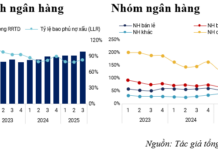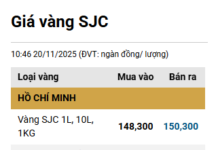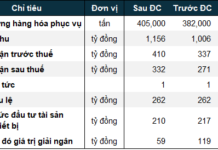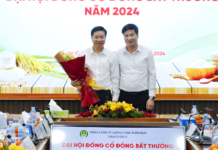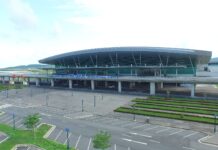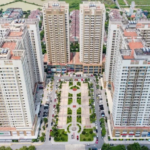On August 19, Vietnam Railways introduced the ‘Five Gates of Hanoi’ train and a biometric ticket control system at Hanoi Station. These two projects are among the 250 projects and constructions inaugurated across the country to celebrate the 80th anniversary of National Day on September 2.
The ‘Five Gates of Hanoi’ train draws inspiration from the beauty of the ancient capital of Thang Long, and each of the five carriages is named after one of the five historic gates: O Cau Den, O Quan Chuong, O Cau Giay, O Cho Dua, and O Dong Mac.
The train consists of five double-decker seating carriages and two exclusive carriages for passenger check-in. The carriages feature luxurious interiors designed with unique themes and offer between 40 and 60 seats each.
During the journey, passengers will be treated to various traditional art forms such as Quan Ho folk songs, Ca Tru ceremonial songs, Cheo and Xam singing…
The ‘Five Gates of Hanoi’ train is expected to commence operations in September 2025, with three daily departures at 8:00 am, 2:00 pm, and 8:30 pm. The train will depart from Hanoi Station, passing through Long Bien, Gia Lam, Yen Vien, Tu Son, and then returning to Hanoi Station.
This is the first tourist train specifically designed to showcase Hanoi’s culture through a railway journey, combining nostalgic elements with modern comforts. The ‘Hanoi Five Gates’ train is not just a new tourism product, reflecting the efforts of Vietnam Railways and its partners to innovate and enhance service quality, but also a labor of love, blending traditional values with innovative approaches to bring railways back into urban life in a vibrant and accessible way. It aims to promote and develop tourism while disseminating the traditional cultural values of the nation.
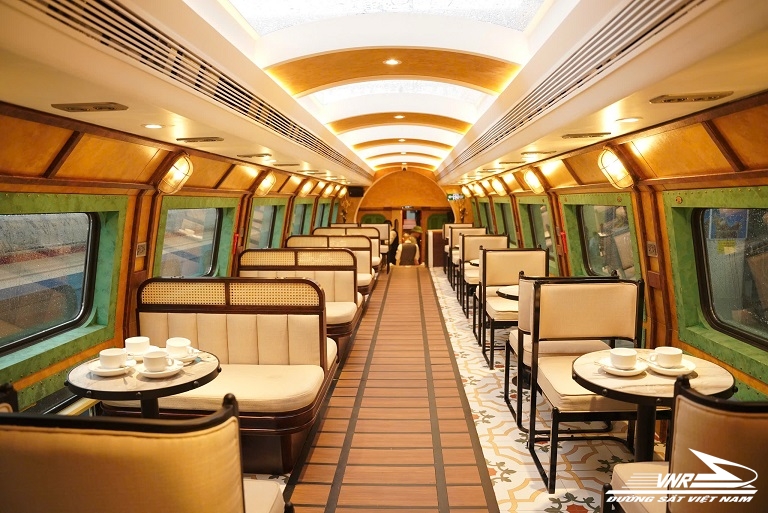
The train includes five double-decker seating carriages and two exclusive carriages for passenger check-in (Photo: VNR)
Vietnam Railways has also introduced a biometric ticket control system based on citizen identification authentication at Hanoi Station, marking a step forward in the industry’s digital transformation and technology integration.
In the initial phase, the system employs the use of chip-enabled Citizen Identification Cards (CICC) for passenger verification, utilizing the national population database to ensure accuracy, security, and legal compliance.
Looking ahead, the system will be integrated with the VNeID application, enabling passengers to use their electronic identification data for ticket verification, eliminating the need to carry physical identification documents. This integration streamlines procedures and enhances the overall travel experience for passengers.
To implement this system, Vietnam Railways directed relevant units to conduct technical infrastructure surveys, assess network connections, power sources, and devise technical installation plans starting in May. By early August, the biometric identification system was installed in the Hanoi Station concourse, seamlessly connected to the electronic ticketing system and the national CICC database.
The introduction of biometric ticket control not only enhances convenience, safety, and transparency for passengers but also strengthens management efficiency and lays the foundation for future modern services. With the eventual integration of VNeID, Vietnam Railways envisions a fully electronic ticket control model, standardized nationwide.
The Sky’s the Limit: Construction of Vietnam’s New 108-Story Financial Tower to Begin in Just 2 Days, Soaring Nearly 200 Meters Above Landmark 81 and Surpassing Bitexco by Over 370 Meters.
Standing at a staggering height of 639 meters, the 108-story supertall skyscraper, part of the Smart City Project in North Hanoi, is set to become Vietnam’s tallest building upon its completion.







